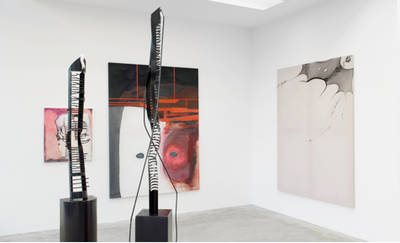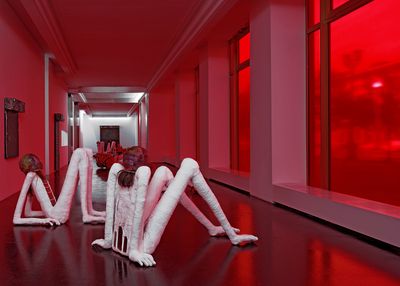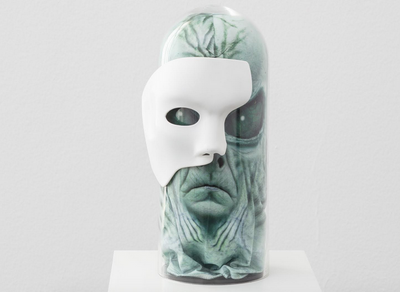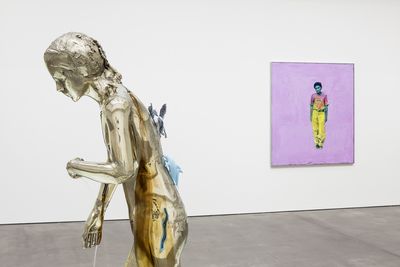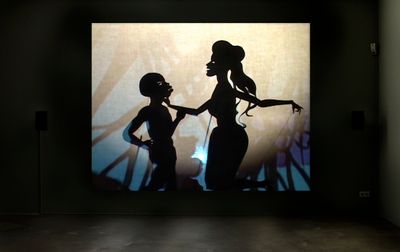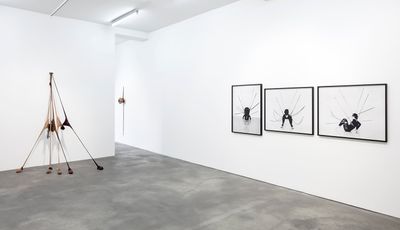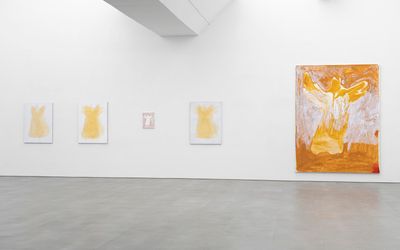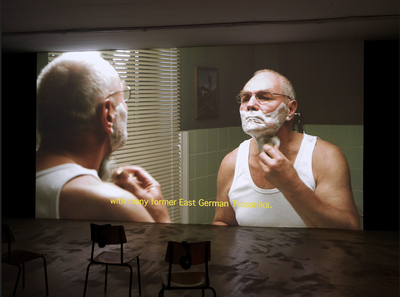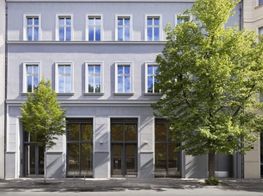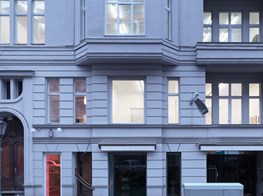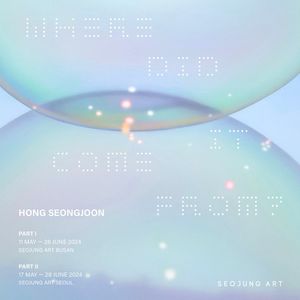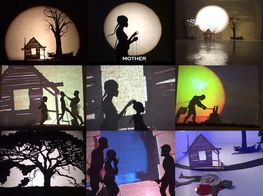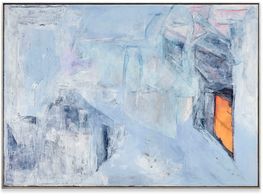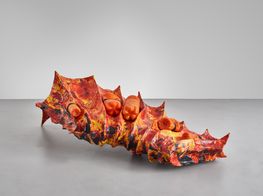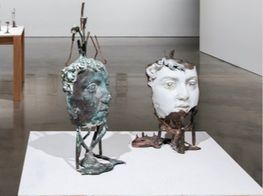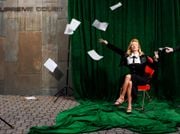Berlin’s Gallery Weekend: Body Conscious
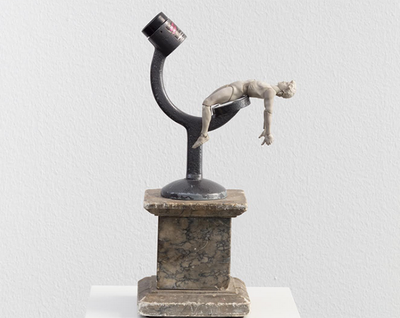
Danny McDonald, Searching For Reassuring Statistics Regarding Classical Proportions (2018). Action figure, aluminum, marble and plexiglass. Sculpture: 35 x 18 x 13 cm; overall: 125 x 25 x 25 cm. Unique. Courtesy the artist and Galerie Isabella Bortolozzi, Berlin. Photo: Thomas Bruns.
What do you need, in order to arrange a perfect storm of an artistic encounter, like Gallery Weekend Berlin (27—29 April 2018)? Galleries and a weekend, that much is obvious; but it's the next question that gets me. How does this Gallery Weekend differ from the other 50-odd weekends when art is exhibited throughout the year, in any given place?
The obvious answers don't quite cut it. You've got that extra Sunday, when Berlin business usually goes to sleep. But that's a minor addition to the Friday and Saturday when most of the viewing gets done, before compounding hangovers from two nights of partying start blurring the eyes. You've also got the throng of collectors and art world professionals who descend on the city; but that's just partying, networking, and selling; the art is no different from that which might appear some rusty mid-October or chilly January weekend.
There's also a special website and a map, the inclusion on which 47 participating galleries each paid 7,500 Euros. On the topic of money, BMWs emblazoned with the Gallery Weekend Berlin logo sat poised outside participating galleries, waiting to ferry VIPs to and fro. Finally, there was an official dinner on Saturday night: a Great Gatsby affair unfolding below a light-bulb firmament. Fun.
To linger on all of this isn't to ignore the content of Gallery Weekend Berlin; on the contrary this is the content. Hence my bafflement: I don't know if my eyes should be on the art, or the swarming collectors, or the pistachio infused desert on my dinner plate, that I can't name. There's a distinctly bodily aspect to this anxiety—a creeping and deeply unpleasant stress, symptomatic of Gallery Weekend magnifying the disparities that define late capitalism (On Monday, one artist said of the weekend's emotional aftermath: 'I have very bad depression.' Me too, I replied.) And it was this feeling that eventually opened an almost clear line of thought on the voluminous quantities of art that I saw.
The artwork that affected me most seemed to do so because of a not altogether heartening relationship to this vexing context. Defined by an over-the-top, even cathartic use of material and motif with strong bodily resonances, this work would have seemed painfully dated not long ago. But now, such corporeal resonance feels weirdly relevant.
The reason seems simple. As our senses of self melt into the digitised haze of self-image obsession, our bodies carry on manifesting the stresses and anxieties of capitalism, finding a strangely appropriate counterpart in all the unwieldy and often chaotic figurative stuff on view.
It was in Leda Bourgogne's show Skinless at BQ (28 April—23 June 2018), that this cathartic effect first appeared. The show was overpacked and, due to a certain melodramatic effect, triggered snickers that I later came to regret. Paintings and drawings of discontiguous characters hung alongside disparate groups of sculpture: in one room, twisted and bent 1990s CD racks; in another, sculptures coupling facsimile body parts and symbolically charged objects, like boxing gloves and feathers.
The most impactful paintings were sewn together with scraps of fabric, with streaks of red floating above macabre bodily motifs—in the case of Shadow of a doubt (2018), mouths made from zippers recall some kitschy haunted house. Old nail holes were left exposed: a typically irreverent strategy for defying white cube preciousness, and red and black predominated: the clichéd palette of passion and oblivion, or anarchy and fascism.
In sum, the show echoed an aesthetic that I remember vividly from the early years of art school before we were drained of our pathos and angst and developed 'correct taste'. In this environment, where anxiety churns underneath cheery appearances, the overwrought gravitas of Bourgogne's work took on renewed relevance.
Midway through looking at Skinless, I turned to the friend who I'd been tittering with, and realised that this was the most compelled I'd felt to talk about an exhibition all weekend. She felt the same. It's hard to argue with this kind of effect: even if—or maybe because—it seems disconcertingly intertwined with the economic structure driving Gallery Weekend Berlin, and the event's market driven pace.
Later the same day, I experienced a similar feeling at Rebecca Ackroyd's The Mulch at Peres Projects (27 April—15 June 2018). Again, the show felt dense: full of large and bizarre chalk-white spindly legged figures from 2018 made from steel rebar, chicken wire, plaster, wax, synthetic hair and acrylic, and equally strange shapes approximating giant crustaceans, and other props, like faux roll-gates, installed on the walls.
A wonky handmade-ness emphasised the bodily resonance of this fun-house scene, where giant Giacometti-esque sculptures, some donning visored helmets and some sunglasses, lounged about in surreal red light: sun filtering through a coloured gel on the gallery's windows. With legs and torsos perforated by window-shaped openings, the figures caricatured an affective relationship between architecture and body: thus resonating unsettlingly with the relationship between my own skin and bones and the baffling cultural infrastructure that they slogged through for three days.
Like Ackroyd's figures, the constructions in Danny McDonald's Search Parameters, shown across town at Galerie Isabella Bortolozzi (28 April—23 June 2018), found a weird poise, despite their connection to puerile fantasy. On plinths and as wall-hung sculptures, recent assemblages of action figures and toys included those arranged into larger composite figures and others constituting multi-dimensional mise-en-scènes, like the creative output of some child endowed with a boundless imagination and equally vast toy box.
It's this quality that I'm referring to when I describe the cathartic effect of certain shows whose appeal lies in an intense bodily affect that counters the comparatively deadening environment of such money-driven and overwhelming art-extravaganzas as this. Of course, this isn't an argument in support of cathartic body art, generally; it's an attempt to understand why it suddenly seemed so important in this particular situation.
Not every instance of figuration worked this way, and the difference was demonstrated through the exhibitions that Sprüth Magers mounted (Kara Walker, Andro Wekua, Senga Nengudi, 28 April—8 September 2018). In the gallery's largest room—a cathedral scale white box—Andro Wekua's seductive paintings and sculptures from 2017 and 2018, coupled youthful human bodies—the most banal kind of beautiful—with radiant colours executed in seductive brushwork, and equally lavish metallic castings.
Contrasting this run-of-the-mill sexiness, was the criminal simultaneity of brutality and weird, puppet-show beauty in Kara Walker's film Fall Frum Grace, Miss Pipi's Blue Tale (2011), shown separately in an adjacent, smaller room. Therein, subtle combinations of paper-cutout film and music, made a horrible knot of pleasure and grotesquerie, with scenes of racist sexual violence derived from the antebellum South.
Given the age of Walker's film, and the difficulties of gallery projection when it comes to lighting, there is justification to screen it in this smaller room, despite its vastly superior affect. By contrast, Sprüth Magers' decision to cram Senga Nengudi's exhibition into a small upstairs space felt bizarre, if not inexcusable.
The work on view was miles more necessary than that shown in the gallery's vaunted main space. Described in the press text as a member of the 'African American avant-garde in Los Angeles and New York in the 1970s and 1980s' the show gathered four of Nengudi's recent sculptures, along with photographs from the 1970s through to 1981, which flit elusively between mass and form, body and ornament. Nylon stockings are her predominant material, sometimes filled with sand, to facilitate weighting and stretching techniques. In turn, metal armatures within her forms ratchet the tension between skeletal corporeality, and decoration.
Nengudi's photographs are more arresting still: musicians and performers wear her objects as costumes and are captured with a snapshot aesthetic that suggests the prioritising of communal and social use over fetishisation and sale. All of which returns us to the spectacular, time-sensitive, commercial context in which these exhibitions have been mounted, and the bodily focuses among them that offer both a release and a reflection when it comes to the system in which such works are being produced and presented.
The truth is that events like Gallery Weekend Berlin more closely resemble the scavenger hunt structure of Pokémon Go than anything approximating a serious encounter with art. The puffed up rhetoric that attends Gallery Weekend Berlin doesn't help. Why should we assume, as one writer put it, that 'it's undeniable ... that everyone benefits from the influx of collectors and art professionals into the city'? Or that there's something praiseworthy in the fact of gallery foot traffic spiking on a single weekend, before reverting to a dismal pace, the following Tuesday?
This kind of one stop shopping spree format is a hollow substitute for a culture in which art might have a salient relationship to the city, its people, and collectors, on an ongoing basis. The situation is even more troubling when understood as part of the general neoliberalisation of culture, wherein the essence of successful art is that which burns fast and sells well: not that which forwards the intriguing, upending and persistent encounters. As one writer put it: 'In any other subculture, if you were disappointed by 80 percent of what you experienced, would you keep participating?'
Within this environment, it's challenging to encounter works by good artists that demand sustained attention. Take Galerie Buchholz's presentation of R.H. Quaytman's An Evening, Chapter 32 (27 April—2 June 2018). For many years, Quaytman has conceived her exhibitions as chapters, with the individual wall installations understood as quasi-sentences. As with previous shows, this one was comprised of many tightly executed paintings, juxtaposing dark black sections with tightly checkered black and white screen-printed areas, sometimes historically inflected with imagery cribbed from 17th-century paintings. Quaytman bevels her wooden supports at the edges, allowing the works to cut a slit in the dimension of painting, slipping into some other object nature.
When one of my despondent friends asked if I'd seen anything good, I mentioned Quaytman's show and then thought twice; there were no surprises in her exhibition; it was just one more component in an extended project. But this is what I appreciated about it: it represented the continuation of an ongoing project that structures her work, as evidenced by an exhibition text that candidly explains how and why, written not by an intern or curator, but by the artist.
But even as I appreciated this idiosyncratically immanent relationship between artist and work, Quaytman's words divulged confusing moments of market driven rationalisation. In paragraph three, she explains how it won't bother her to see the paintings separated from their context like words orphaned from their sentences and chapters—the very structure that gives them meaning—so they can be distributed as 'anarchic open images'.
I don't buy it. Or at least I don't want to. And I reserve the right to be dismayed by this kind of compromise, in an art world that preaches autonomy but hews to the dictates of market functionality. If there was any theme to Gallery Weekend Berlin, it was that of grasping—and sometimes finding—fragments of palpable meaning in an event designed to move both art and people, and quickly.
Late in the weekend, I visited Cecilia Edefalk's the eight White Within angel at carlier | gebauer (28 April—2 June 2018), and Sven Johne's Dear Vladimir Putin / I am the Power, at Klemm's (28 April—9 June 2018). The former centred around an ongoing series of oil and acrylic paintings started in the early 1990s, repeating a gauzy and ambiguous angel motif, in brushy applications of white and yellow. The latter was comprised of new videos, sound, and images augmented with text.
Among these was an immersive wall projection playing an 18-minute film, Lieber Wladimir Putin / Dear Vladimir Putin (2017), in which a German man of about 70 carefully puts on his suit while reciting a speech of deference directed at the Russian president. It was a murky scene of power appeasement, in turns touching and creepy. The same was true of Edefalk's angel motifs: reverent because of their religious intonation, but touched by more troubling feelings, because of the ungraspable images and the obsessive method that produced them.
Accordingly, these two exhibitions were a fitting and optimistic end to an occasion driven by the religion of capital. They exemplified how art can still be tethered—resolutely, embarrassingly, even pathetically—to something deeper and more dissonant.—[O]


